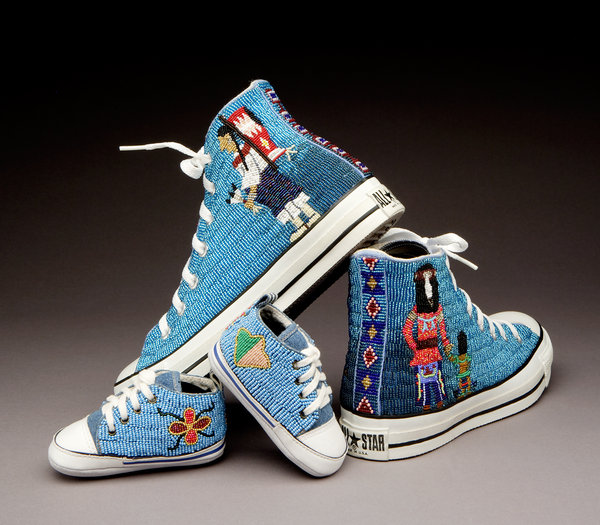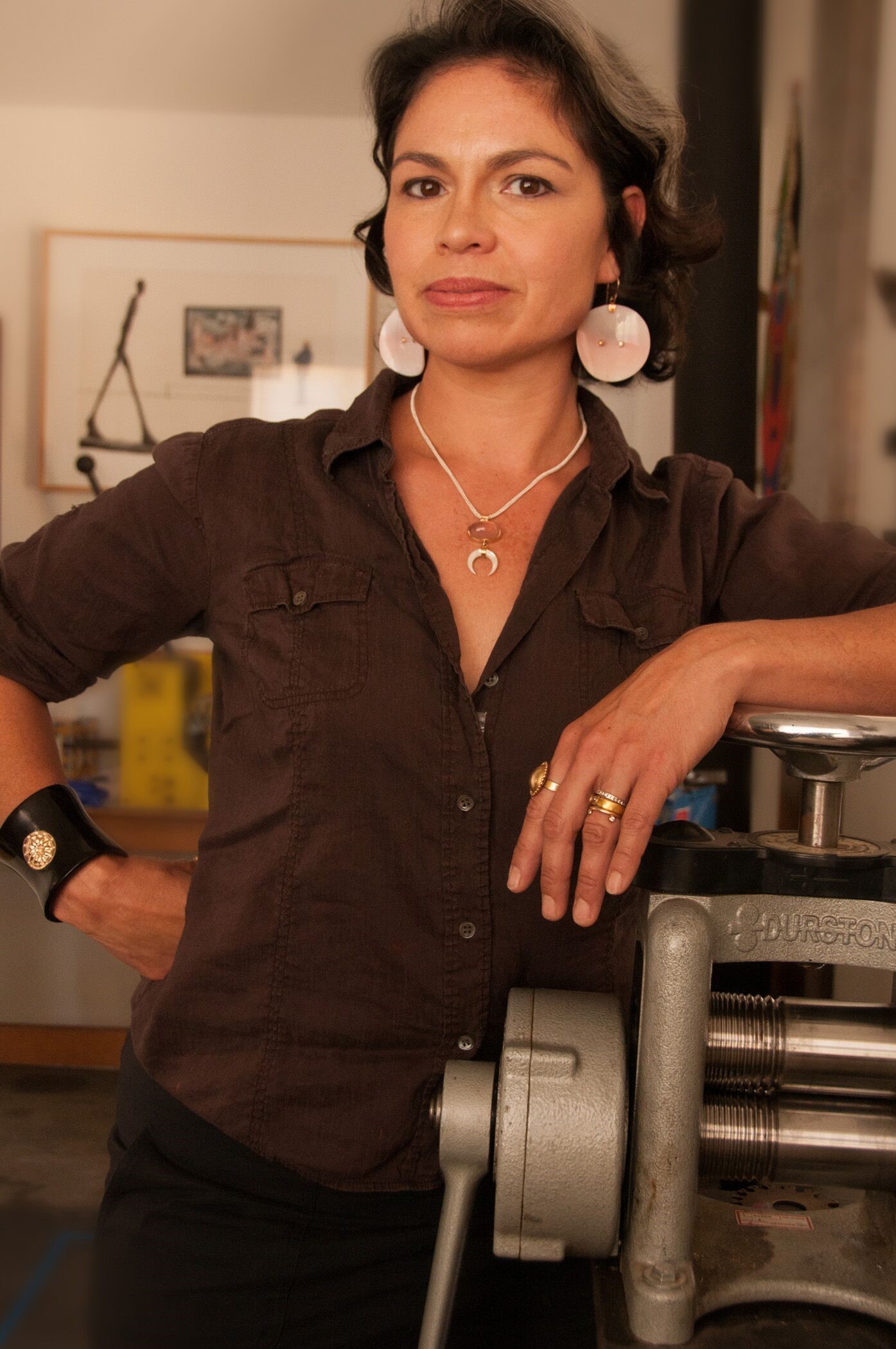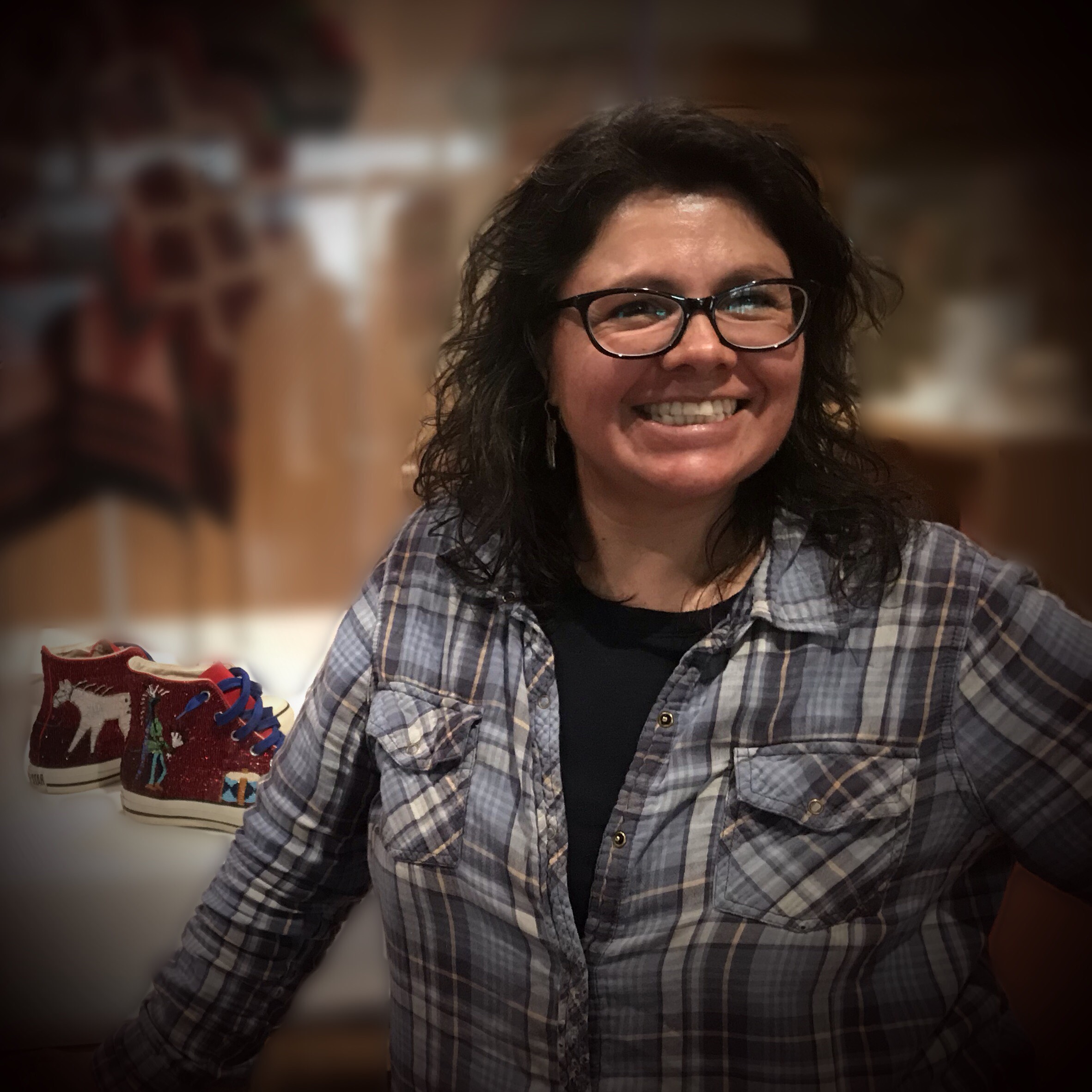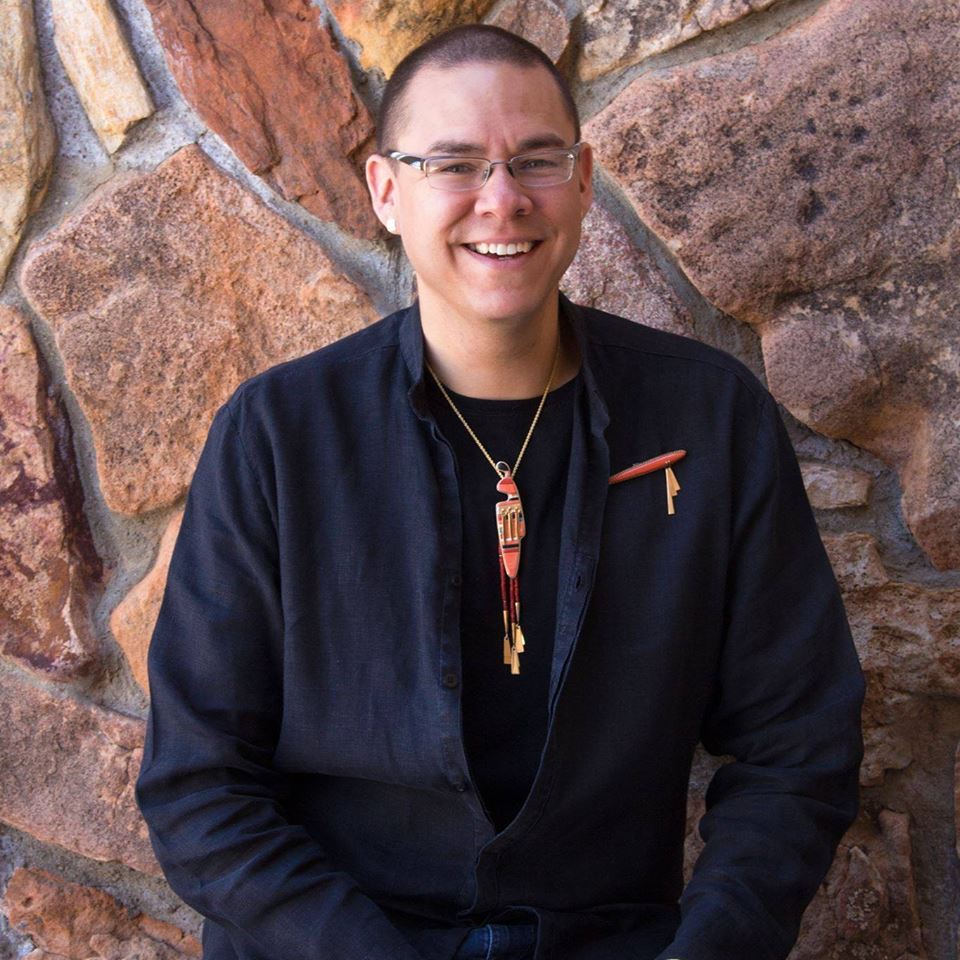Kiowa-Proud, Sisters in Action: Teri Greeves and Keri Ataumbi

Teri Greeves, My Family’s Tennis Shoes, 2003
Beads, Converse All-Stars shoes, OshKosh B’Gosh shoes.
SAR.2003-16-1
IARC Speaker Series, Eric S. Dobkin Boardroom, School for Advanced Research, 660 Garcia Street, Santa Fe
Wednesday, April 17, 6:00-7:30pm, Admission is free.
Moderator: Ken Williams, artist; Case Trading Post manager; Wheelwright Museum of the American Indian
Panelists: Keri Ataumbi, artist; Teri Greeves, artist
In the 1970s, two sisters were born and raised under the powerful presence of their mother Jeri Ah-be-hill. Jeweler Keri Autumbi and beader Teri Greeves speak about the influence of their mother, have a chat about their career trajectories, the meaning of tradition, and what they hope for future generations of young artists. Fellow beader, close friend, and manager of the Wheelwright Museum’s Case Trading Post Kenneth Williams guides the conversation.
Raised on the Wind River Reservation in Wyoming, Keri Ataumbi was exposed to both traditional Native American aesthetics and contemporary art theory and practice from an early age. Ataumbi attended Rhode Island School of Design before moving to Santa Fe in 1990. After moving to Santa Fe she worked as a landscape designer while attending the Institute of American Indian Arts and eventually received a BFA in painting with a minor in art history from the College of Santa Fe. She currently lives and works in the Cerrillos Hills outside Santa Fe.
My jewelry falls into the category of wearable art as it has a conceptual narrative exploration at its core. I am Native American, I use traditional Kiowa imagery and materials in contemporary form. Informed by materials and the value systems different cultures put on those materials as well as my personal aesthetic, my goal is to create work that strives to embrace contemporary jewelry making strategies by applying artistic methodologies that are different from traditional design processes. Different in that their dynamic comes from a content-based enquiry rather than tried and true design, marketability or a traditional form.

Keri Ataumbi. Photo courtesy of artist

Teri Greeves. Photo courtesy of artist.
Enrolled with the Kiowa Tribe of Oklahoma, Teri Greeves began beading at eight years old. After growing up on the Wind River Reservation in Wyoming where her mother ran a trading post, she eventually graduated from UC Santa Cruz. Greeves began her career as a beadwork artist after winning Best of Show at Santa Fe Indian Market in 1999. She has won awards and honors at Indian Market, the Heard Museum and in 2003, she received the Dobkin Fellow at the School of American Research. In 2009 she was featured in the PBS television series, Craft in America and in 2016 she was selected as the USA Distinguished Fellow in Traditional Arts. Her work has been exhibited in Changing Hands 2 at the Museum of Art and Design; at the Brooklyn Art Museum’s Tipi: Heritage of the Great Plains; in State of the Art at the Crystal Bridges Museum; and recently in Native Fashion Now at the Peabody Essex Museum. Greeves’ work is also included in the collections of the Smithsonian’s National Museum of the American Indian, the British Museum, the Heard Museum, the Brooklyn Art Museum, the Museum of Arts and Design and the Portland Art Museum among others. She is currently co-curating an exhibition on Native American women’s art with Jill Ahlberg-Yohe at the Minneapolis Institute of Art opening in June 2019. Greeves lives with her husband and two sons in Santa Fe, NM.
Ken Williams Jr. (Arapaho/Seneca) b. 1983, began his career at an early age, experimenting as a self taught artist who learned by observing family and friends. He completed his BA in museum studies at the Institute of American Indian Arts, Santa Fe (2007) and while there took beadwork classes from noted beadwork artist Teri Greeves. Since 2003 he has been participating in the Southwest Association for Indian Arts (SWAIA) Annual Indian Market, Santa Fe and since 2006 at the Heard Museum Annual Indian Market and Festival, Phoenix. William’s work has been widely exhibited and garnered many awards. It is in many prominent collections including the Nerman Museum of Contemporary Arts, Wheelwright Museum of the American Indian, Heard Museum, Museum of Indian arts and Culture (MIAC), Montclair Art Museum, Utah Museum of Natural History, Utah Arts Council, National Museum Scotland, as well as many private collections nationwide.

Ken Williams. Photo courtesy of artist